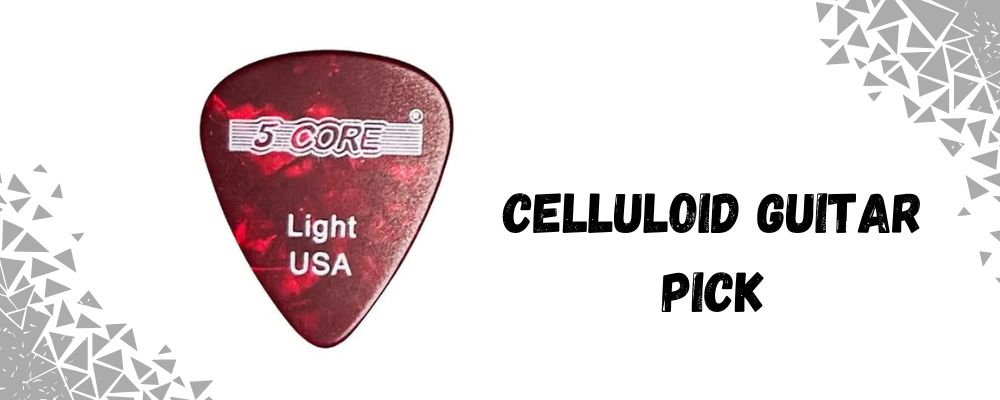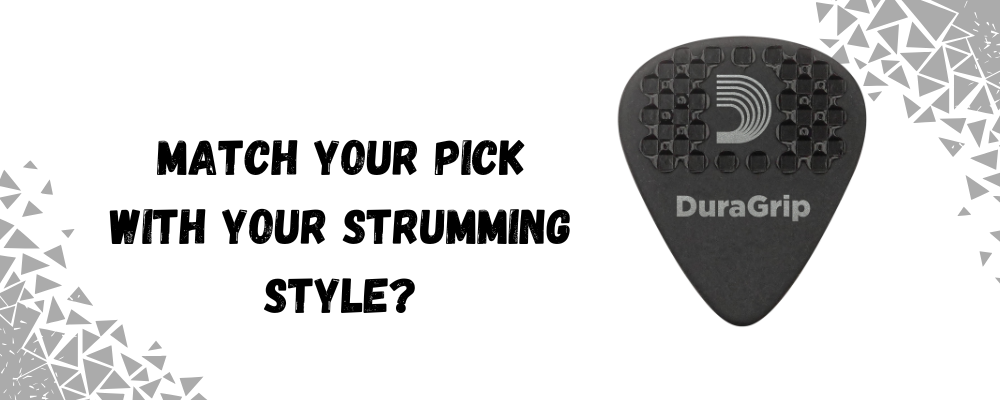Tips for Choosing the Right Guitar Picks for Your Playing Style

There’s a good chance your guitar pick is doing more to shape your tone than you think.
Ask any seasoned guitarist and they’ll tell you—the right pick feels like an extension of your fingers. The wrong one? A constant distraction that ruins both tone and technique.
Most players don’t realize how big a difference a small triangle of plastic can make until they find the one. And when they do, everything—from tone control to articulation—clicks into place.
But that “aha” moment doesn’t come from guesswork. It comes from knowing what works for your hand, your playing style, and the sound you’re chasing.
Let’s break down what actually matters when choosing the right pick—without the noise.
Guitar picks are far from mere accessories—they’re essential for unlocking speed, precision, and tonal clarity. As Guitar Space puts it, picks empower players to master fast solos, articulate dynamic riffs, and explore advanced techniques like alternate picking and sweep picking—all with accuracy and control that fingers alone can’t match.
The Role of Pick Thickness in Tone and Technique
Thick or thin? This is normally the initial choice of a guitarist- and it is not a matter of choice. It is more of the type of music you are playing and how you are dealing with the strings.
Thin Picks (0.38mm – 0.60mm)
Thin picks are flexible and light-touch if you happen to be into strumming acoustic chords. They slide across strings and are therefore good in rhythmic, percussive playing where the clarity of notes is secondary to texture.
But there’s a trade-off—less control, and way less attack. You won’t get the same note definition or volume.
Medium Picks (0.60mm – 0.85mm)
Medium gauges are often the starting point for beginners because they’re the most versatile. They allow enough give for strumming, but still give you decent control for light picking.
They're the “safe zone”—but depending on your style, that might also mean they’re not doing enough in either direction.
Heavy Picks (0.85mm and above)
Thicker picks are about precision. If you're playing lead guitar, fast alternate picking, or anything involving articulate phrasing, this is where they shine.
This is the tendency of metal and jazz players because more mass = more control = more punch. It becomes darker, fuller, more purposive.
Shape and Size: Small Details, Big Impact
The classic teardrop shape isn’t your only option. And if you’ve never explored beyond it, you’re likely leaving tone and comfort on the table.
Standard Teardrop
This is the industry default. It works for most players and styles—hence its popularity. If you’re not sure where to start, this shape gives you consistency and balance.
Jazz Picks (Small, Pointed)
These are built for speed and accuracy. The sharper tip and smaller profile offer minimal drag and tighter attack, which is why shred and fusion players favor them.
That said, they can feel cramped if you’re not used to them.
Triangle and Stubby Picks
Triangle picks give you multiple usable tips, which is handy during long sets. Stubby picks, often rounded and thick, are favored for gripping comfort and sustained tones—especially in fusion, funk, and hybrid styles.
Pick Materials: Feel and Tone in Your Fingers
Material might be the most overlooked variable in a pick, but it plays directly into both comfort and tone.
Celluloid
A classic pick material. Smooth, slightly glossy, and known for its traditional, bright tone. If you’ve used picks before without thinking much about them, chances are you’ve used celluloid.

Play with ease and bright tones with these light 0.46mm celluloid picks by 5 Core. Ideal to play on any acoustic, electric or bass guitar. Comfortable and long-lasting to strum or pick hours.
Nylon
Flexible and grippy. Nylon picks are often textured, which helps with grip—especially when your hands sweat. They also produce a warmer, less snappy tone compared to celluloid.
Delrin / Tortex
Delrin (branded as Tortex by Dunlop) offers a matte, chalky feel that resists slipping. The attack is punchy, and it wears down slower than nylon or celluloid. A favorite among rock and punk players.
Ultex
Ultex picks are stiff and very hard-wearing with a sharp, concentrated strike. When you are an aggressive player and you want something that does not wear out quickly, Ultex will give you that additional durability and bite.
Find your tone in your fingertips — the right pick changes everything.
Match Your Pick to Your Playing Style
There’s no “best” pick—just what works best for you. That said, certain styles tend to favor specific types:

For Strumming & Acoustic Rhythm
Start with a thin to medium pick made of nylon or celluloid. You'll get a clean strum without the pick snagging too hard on the strings.
For Lead Guitar & Fast Picking
Try a heavy gauge, preferably in Ultex or Delrin, with a sharp tip. Precision is the goal, and these picks deliver that with less effort.
For Hybrid Styles or Studio Work
Strumming and picking are balanced with medium picks with a rough grip (such as Tortex). They are predictable, comfy, and do not slip in the middle of the take.
Conclusion
Nothing will be as good as practical testing. What is good to one guitarist may not be good to the other. That is why even professionals have a few picks of various sizes, shapes, and gauges.
You are not obliged to stick with one. Your perfect choice will vary with your tone, your strings, or even your mood. It is all about what makes a difference, and you are not left in the dark.
Start small. Take a mixed pack. Use both picks to play the same riff. Listen to the way it feels, the way it sounds and the way it makes you play.
That is the actual decision-making process not in the specifications but in the reaction.
Here you can find amazing drum thrones; alternatively, browse our product page to find the best keyboard bench, audio mixers, drum mics, piano bench, keyboard stand, speakers, party speakers, and more.








